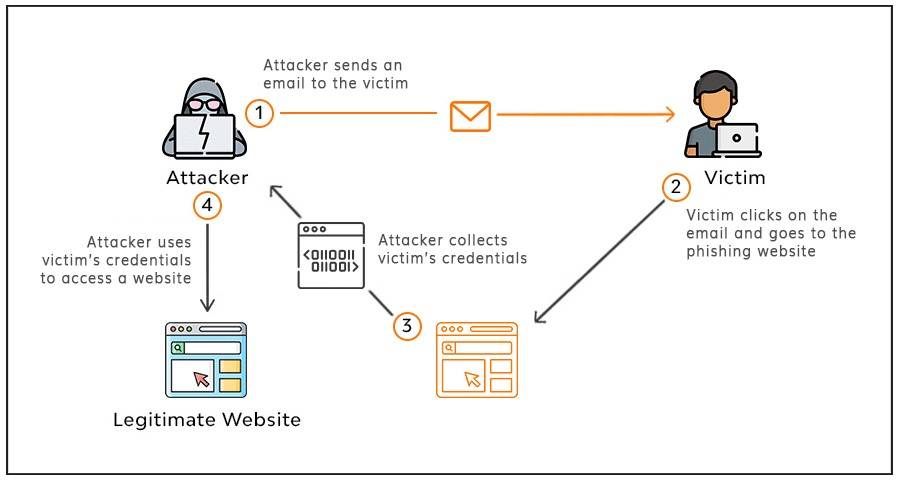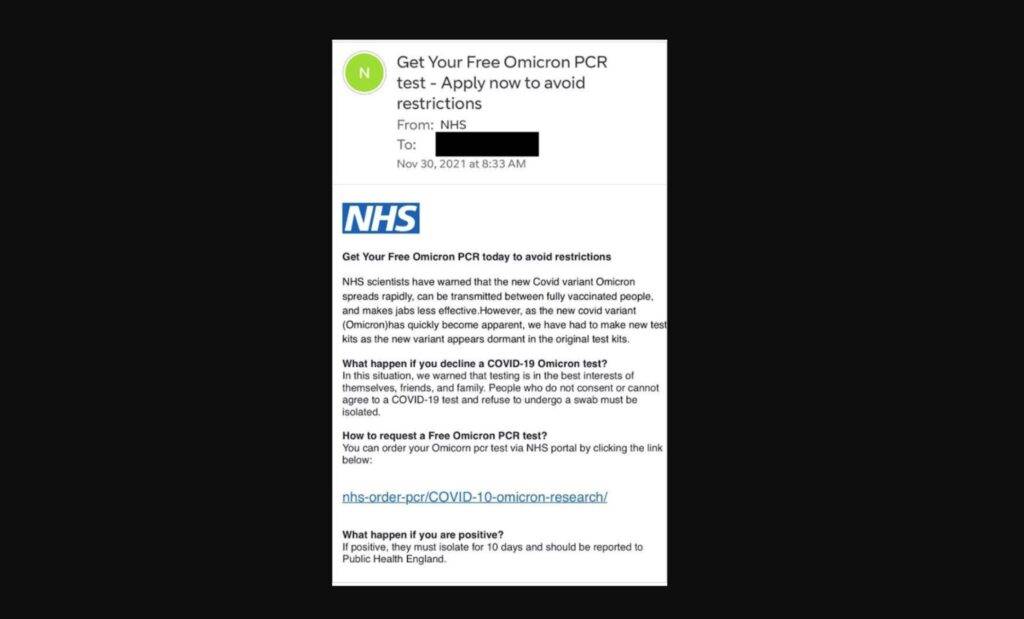Last Updated on July 16, 2024 by Team Experts
The number of active users of Office 365 is increasing every day. This subscription-based service is used by over a million companies across the world. With the rising number of active users, this platform is becoming a target-rich environment for advanced phishing attacks. This article will consider that and explain the different methods to secure Office 365 email. You can also opt for an advanced Office 365 Backup Tool to backup Office 365 mailbox data.
Why Office 365 Is An Impersonated Brand In Phishing Attack?
Office 365, now become Microsoft 365 is a multisystem platform that offers email, file storage, and some productivity applications, including OneDrive and Sharepoint. These Office 365 services collectively represent a massive amount of sensitive data that phishers are looking to exploit. Apart from that, Office 365 phishing is pervasive because of its more number of users. Microsoft 365 becomes susceptible to phishing and ransomware attacks as the subscription rate increases.
MS Office 365 phishing protection is also necessary because it is a large hosted cloud-based service for business environments. If phishers manage to take over one of its accounts then, they can use it to spread thousands of phishing attacks. These attacks are sent from an authentic account therefore, it is likely to get past Exchange Online Protection (EOP) and Advanced Threat Protection (ATP).

The Omicron Lockdown scenarios provide an opportunity for cybercriminals to exploit the crucial Office 365 data. The main reason is that most home networks lack the same level of security that exists in the workplace. Thus, some hackers targeted the universities in the US and UK by sending out phishing emails about free COVID-19 Omicron testing.
Before moving on to the efficient solutions for Office 365 phishing protection. Let’s understand the basics of these phishing attacks and why we need to secure Office 365 email.
Introduction to Phishing Attacks
A phishing attack is an email attack that tries to steal your sensitive information in messages. These attacks can easily evade the Microsoft threat protection policies as these attacks are sent from a legitimate account. The main focus of these attacks is to grab the user names and credentials to target those users’ colleagues or business partners.
Following are some of the Office phishing emails examples that lead to secure Office 365 email.

- PhishPoint: This attack evades all the built-in Office 365 phishing protection. Cybercriminals use a legit file that contains the malicious link to get through the Office 365 security protection.
- Non-Delivery Emails: In this type of attack, you will receive a fake non-delivery email that contains the malware in its send again link. It’s hard to differentiate between genuine or scam emails as these emails seem to be authentic ones.
- Storage Limitations Alerts: In this type, you will receive an email warning that you’re reaching your Office 365 storage limit. Then it asked for the login credentials to activate “Quota” to fix this issue.
- Reactivation Requests: This email will ask you to reactivate your Office 365 account. And then, these attackers save your account details when you enter the login credentials on the fake login page. Now, they use these credentials to aid in future attacks.
These are some of the examples of Phishing emails. The proper knowledge of these phishing attacks helps to secure Office 365 email. Now, let’s go through some examples of exploitation in UK and US universities during the Omicron Lockdown.
How Scammers Exploit Omicron Variant in Phishing Emails
In the UK, hackers are sending scam emails pretending to be the UK National Health Service. According to the consumer, the scam email tried to convince the user that the existing COVID-19 tests can’t identify the Omicron variant. Which is false, and then the message asked the user to click on the link to order the new test kit from the NHS.

Similarly, many universities in North America witnessed these phishing attacks. In one of the scenarios, hackers sent the email having the subject line “Attention Required-Information regarding COVID 19 Omicron Variant”. Then this email offered a link that redirects to a similar legit login page of the university. However, in reality, it is under the control of hackers.

Similarly, some of the Office 365 users have also witnessed such scenarios. Therefore, we need to ensure Office 365 email protection to secure Office 365 mailboxes.
Methods to Secure Office 365 Email from Phishing Attacks
Now, the main concern is how to protect your Office 365 mailbox from Email scams, Threats, and Online Attacks. In this regard, you need to consider the following methods for Office 365 phishing protection.
Method-1: Anti Phishing Protection in Exchange Online Protection
With the growing complexity of these attacks, Microsoft defender contains Office 365 anti-phishing policy best practices for Office 365 email protection. Microsoft 365 organization without Microsoft defender for Office 365 provides the Exchange Online Protection. Some of the advanced features that ensure Office 365 email security are:
- Spoof Intelligence
- Anti-phishing policies in EOP.
- Blocked Spoofed Senders in Tenant Allow/Block List.
- Email Authentication Check for Inbound Email.
Method-2: Advanced Threat Protection in Office 365 to Secure Office 365 Email
It is a native security solution that scans all incoming emails for malware, malicious link, and spoofing. If it detects anything as a phishing attempt, ATP then blocks that email from reaching your inbox. However, many users want to know how to block phishing emails in Office 365 admin panel. In this case, if they’ve added Office 365 ATP to their subscription, then it will automatically work for their Office programs.
Note: “The Office 365 ATP policies changes as per the requirement of your organization.”
Office 365 Anti-Phishing Policy Best Practices:
Your global or security administrator will set the anti-phishing policy option in your Office 365 ATP. These options include the following parameters:
- The details of users and domains that you want to protect.
- Details of trusted Senders and Domains.
- Necessary actions to be taken against phishing attempts.
- Option to enable the mailbox intelligence.
- Advanced phishing threshold.
You should regularly backup Office 365 mailbox to secure Office 365 email. We all know that our mailbox contains lots of sensitive and crucial information. Therefore, it is of utmost need to take the backup of this highly confidential data that a cybercriminal can exploit.
In addition to this, you can export Office 365 mailbox to PST, PDF, and MBOX, or you can directly import them into other email clients. However, for Office 365 email protection, you should opt for the professional approach. This approach consists of an Office 365 backup tool that ensures high data integrity throughout the entire process.
Advanced Professional Approach to Backup Office 365 Emails
This professional approach includes the Office 365 Email Backup Tool to secure Office 365 email from any data loss. It is crucial to backup Office 365 mailbox more frequently to prevent the data in a similar Omicron lockdown situation. This Office 365 backup utility has some advanced features that make it a reliable and secure approach for Office 365 email protection.
Before opting for any Office 365 Backup Software, you need to consider the following features first. For instance,
- It should allow users to export Office 365 mailbox to PST, EML, HTML, EMLX, MBOX, MSG, etc.
- It should also facilitate migrating Office 365 emails to Gmail, IMAP, Thunderbird, AOL, Zoho Mail, and other email clients.
- You should be able to save Emails, Contacts, Calendars, Tasks, and Journals on the hard drive.
- It should facilitate users to Assign Impersonation Rights. This option will allow you to backup the emails of the user accounts of the Office 365 Admin account.
- Additionally, it should allow saving items from In-place Archive, Mailbox, and Public Folder.
Moreover, this software must support all the latest versions of Windows, including Windows 11. Apart from this, it should allow you to try its free demo version to analyze its performance.
Conclusion
Do you want to secure Office 365 email from phishing attacks? Just keep track of the Office 365 anti-phishing policies that we discussed here. This article also explained the potential scenarios through which a phisher exploits your data. However, you can also backup Office 365 mailbox more often by using an advanced Office 365 Backup Tool.
Frequently Asked Questions
Does Microsoft 365 protect against ransomware?
Yes, Microsoft has built-in versioning and post-deletion recovery capabilities. It protects against ransomware and data corruption. However, the built-in tools provide less protection leading to a backup Office 365 mailbox to prevent the exploitation of your crucial data.
What do I do if I receive a phishing email?
If you suspect that an email you received is a phishing attempt then, keep these points in mind:
Don’t open that email.
You should delete it as soon as possible.
Never try to download any attachments of such an email.
Careful with the embedded links. Never click any link embedded in this message.
Report it and help others to avoid further phishing attempts.

